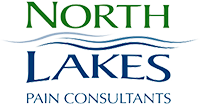How to Prevent Golfer’s Shoulder and Elbow Pain
How to Prevent Golfer’s Shoulder and Elbow Pain
How to Prevent Golfer’s Shoulder and Elbow Pain
Throughout the global pandemic, many recreational activities have had to be put on hold. One that was deemed safe, however, is golf. Given that it allows for physical distancing and that golf courses are taking additional measures to sanitize their clubhouses, carts and other equipment, golf has proven to be a good way to address both the social and physical constraints put on us as a result of COVID-19.
But that also means that many golfers may be overdoing it, hitting the course several times a week as a way to get outside, get some exercise and reduce stress (which may be relative depending on how good their golf game is).
Golfer’s shoulder and elbow are common complaints among those who hit the links regularly. Pain, stiffness or weakness/numbness in the shoulder and forearm are often caused by a number of factors, including:
- Poor form or technique
- Using the wrong clubs, usually based on height and weight
- Failure to stretch muscles and warm up before hitting the course and teeing off.
How to Treat Golfer’s Shoulder and Elbow
As is the case with all orthopedic sports injuries, the first course of action should be to take some time off. That may not be what dedicated golfers want to hear, but abstaining from repetitive motions enables irritated and inflamed tissues to heal.
In addition to rest, self-help for golfer’s shoulder and elbow should also include:
- Icing of the affected area, several times a day for 15 to 20 minutes at a time.
- Over-the-counter anti-inflammatories such as Motrin or Aleve can help with the pain and discomfort while also helping to reduce the swelling that is causing the pain.
- Exercises to stretch and strengthen the affected area such as squeezing a tennis ball or using resistance bands to improve shoulder strength and range of motion.
- A counterforce brace on the affected arm might reduce tendon and muscle strain.
When the pain has subsided and it’s time to get back on the course, these tips can help avoid further injury:
- Make sure clubs are the correct length and weight. Consider investing in lightweight graphite clubs.
- Work with a golf pro to improve technique, including learning how to improve the downswing, backswing and follow-through. Poor form in any of those areas can put additional stress on the arms and shoulders.
- Use a rolled up towel under the arm during practice swings to help keep the right elbow close to the body to avoid increased strain on the shoulder.[i]
- Avoid carrying a golf bag with a sore or aching shoulder.
What to Do When the Pain Won’t Go Away
If shoulder or elbow pain persists even after rest and home therapy, golfers should see a pain medicine specialist. These physicians have extensive training in how to recognize the exact source of a patient’s pain and can offer a non-surgical option to relieve pain and encourage healing of injured tissues.
Using fluoroscopic (x-ray) guidance, a pain management specialist can deliver a corticosteroid injection directly to the source of inflammation in a golfer with elbow or shoulder pain. These injections can provide many months of relief while allowing the irritated and inflamed tissues to heal.
As is true of all treatments, early intervention is key to positive outcomes, so golfers who have shoulder or elbow pain that does not resolve after a few weeks of rest and home treatment should seek the expertise of a pain management specialist.
Sources:
[i] https://www.hss.edu/golfportal/tips-for-protecting-your-shoulder-on-the-golf-course.htm
